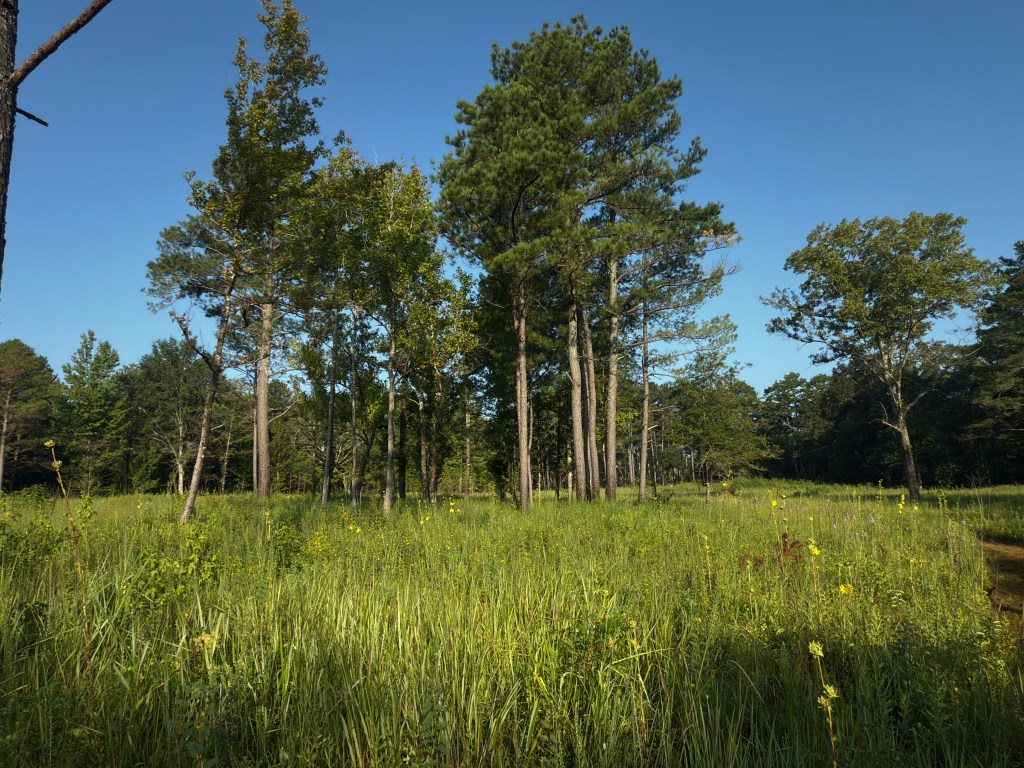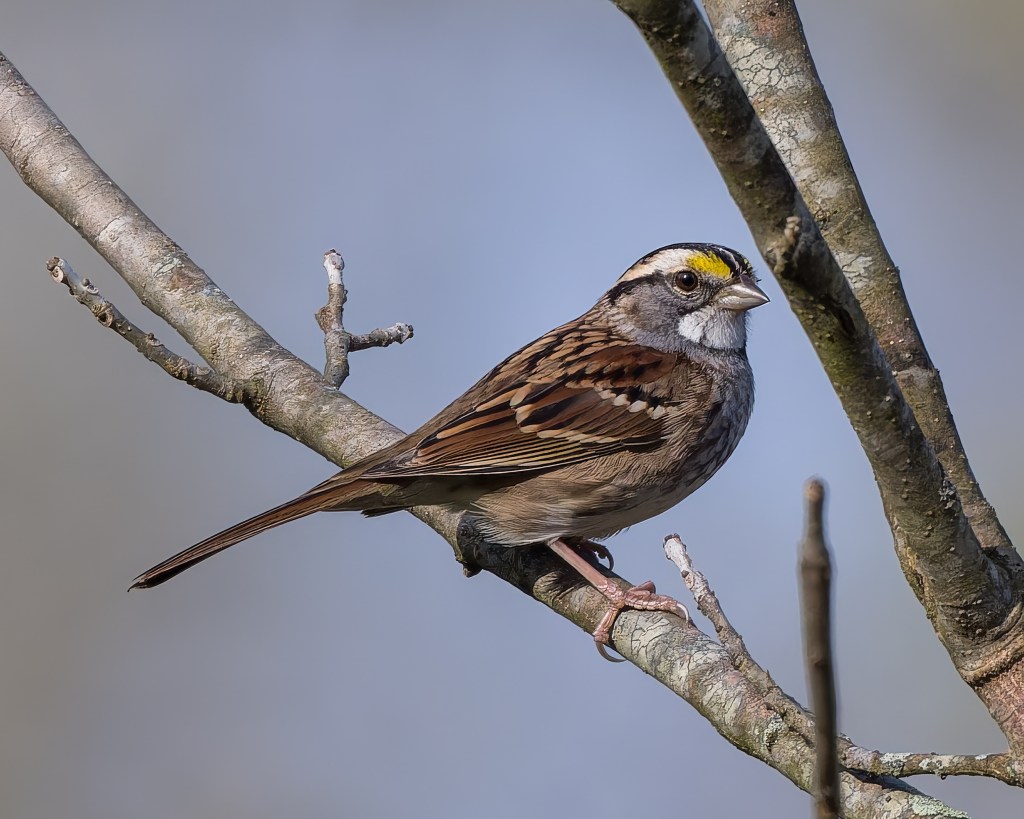Reviewed by: Rushing Waters
Restoring Alabama’s Black Belt Prairie: A family’s mission
Reading time: 6 minutes
Sponsored

Hazel Hutcheson Bell proudly calls her family, “accidental conservationists.”
For decades, the family’s 11,000-acre Sumter Farm and Stock Company farm in Geiger, Alabama has been primarily managed as a place for quail hunting.
That meant they regularly burned the land to create grassland the quail love.
Unbeknownst to the family, by managing the land intensively with fire for at least 80 years, they saved one of the largest privately-owned, intact remnants of Black Belt Prairie.
And that’s a big deal. According to the Southeastern Grasslands Institute, the rare prairie on the farm is so diverse, it is likely home to possibly 900 different kinds of plants.
As a result of this discovery, the Bell family has made it their mission to preserve the rare prairie and supply their neighbors in the Black Belt region with seeds and plants from the farm so that together, the community can help restore Black Belt Prairie.
Throughout 2025, we have examined special places and landscapes in Alabama. In September, we wrote about mountain longleaf forests and the Paint Rock Valley in the northeastern part of our state.
In this edition, we share about Black Belt Prairie and a family that is actively restoring it through the propagation of the prairie’s rare seeds, plants and ecotourism
About Black Belt Prairie

Named after its rich, dark soils, the Black Belt crosses 17 counties across Alabama beginning near Phenix City in the east and moving through Montgomery and Selma to the Mississippi state line.

Two centuries ago, the Black Belt Prairie and other grasslands dominated Alabama’s landscape. But that all changed in the 1800s when grasslands and prairies were converted into cotton crops.
“Black Belt prairies like grasslands most everywhere in the South or the rest of the US, rest of the world for that matter, are the first habitat to go in a landscape. It is the easiest to start using. It essentially takes very little work to start planting crops.”
Chris Oberholster, Southeastern Grasslands Institute
As a result, 99% of our Black Belt prairie lands have been converted to agriculture and rooftops.
What have we lost? A lot, according to renowned ecologist and Alabama Audubon Executive Director Dr. Scot Duncan.
For example, because the south’s Black Belt Prairie and Tallgrass Prairie in Kansas landscapes were connected during the ice age, the disappearance of the Black Belt Prairie habitat means we lost the largest Tallgrass Prairie in the Eastern U.S.

Other native animals gone or nearly lost from the prairie include:
- Bison
- Southeastern Elk
- Grassland birds such as painted bunting, scissored-tailed flycatcher and short-eared owl
An obligation to bring back Black Belt Prairie

When we asked Hazel Hutcheson Bell’s husband Mitchell Bell why preserving Black Belt Prairie on the farm matters, he said, “It’s an obligation.”
“I have grandchildren, and I really fret about climate change. What would you do with this (farm)? You could maximize the dollars out of it, and sell it to somebody else. Then, another generation goes by and it turns into a development or something. That thought horrifies me. I think it’s a disservice to future generations and past generations.”
Mitchell Bell, Sumter Farm and Stock Company
As the point-person spearheading conservation and management on the farm, Mitchell takes his obligation very seriously.
He is doing everything possible to preserve this special farm while also initiating numerous projects all geared toward educating people and expanding Black Belt Prairie.
And their work is getting noticed. Earlier this summer, Mitchell and Hazel were named Land Conservationist of the Year at the Alabama Wildlife Federation Governor’s Achievement Awards ceremony this summer.
Case in point:
Collecting native seeds and plants

Currently, Mitchell and his family are building greenhouses on the farm and working with a seed company to soon share the 100 different kinds of seeds and plants they have collected on the prairie.
“We’re lucky to have a lot of rare and endangered species of botanicals here. My mission is to be able to supply other folks in the Black Belt region with seeds or plants so that they can do their own restoration work, pollinator garden or whatever and get people interested.”
Mitchell Bell, Sumter Farm and Stock Company
The new seed business will be called Wild Horse Native Nursery and is expected to open in 2026.
Ecotourism, from hunting to bird-watching
For years, the farm has been a destination for quail hunting and fishing. Recently, this special space, which also has cabins and lodges, welcomed guests participating in the annual Alabama Audubon Black Belt Birding Festival.
At this summer’s festival, over 275 birders from 14 states helped generate $71,000 in local sales revenue during the three-day event.
Alabama Audubon is also conducting bird research at the prairie and field trips year-round.
“When I tell people why, I say it’s an obligation, I really feel that way. We’re obligated to do whatever we can to make sure it stays intact.”
Mitchell Bell, Sumter Farm and Stock Company
How to get involved with Black Belt Prairie
Want to see what the Sumter Farm and Stock Company farm looks like?
Native plant social influencer Kyle Lybarger posted on Instagram about the farm. The post, which highlighted why the farm is special and why it matters, attracted over 2.8 million views.
Lybarger summed up the beauty of the farm, the prairie and its impact best:
“What makes the farm special is the family.”
If you want to go see and help support Black Belt Prairie, visit the following sites:
Sponsored by:



![3 facts to know about Alabama’s unique Pinhoti Trail [MAPS] 3 facts to know about Alabama’s unique Pinhoti Trail [MAPS]](https://wp.fifu.app/thebamabuzz.com/aHR0cHM6Ly90aGViYW1hYnV6ei5jb20vd3AtY29udGVudC91cGxvYWRzLzIwMjUvMTIvdGVycmFwaW4tbGFkaWdhLXBpbmhvdGktY2hlYWhhLTExNC0xMDI0eDgxOS5qcGc/921128710ad3/3-facts-to-know-about-alabamas-unique-pinhoti-trail-maps.webp?w=768&h=0&c=0&p=1247158)
